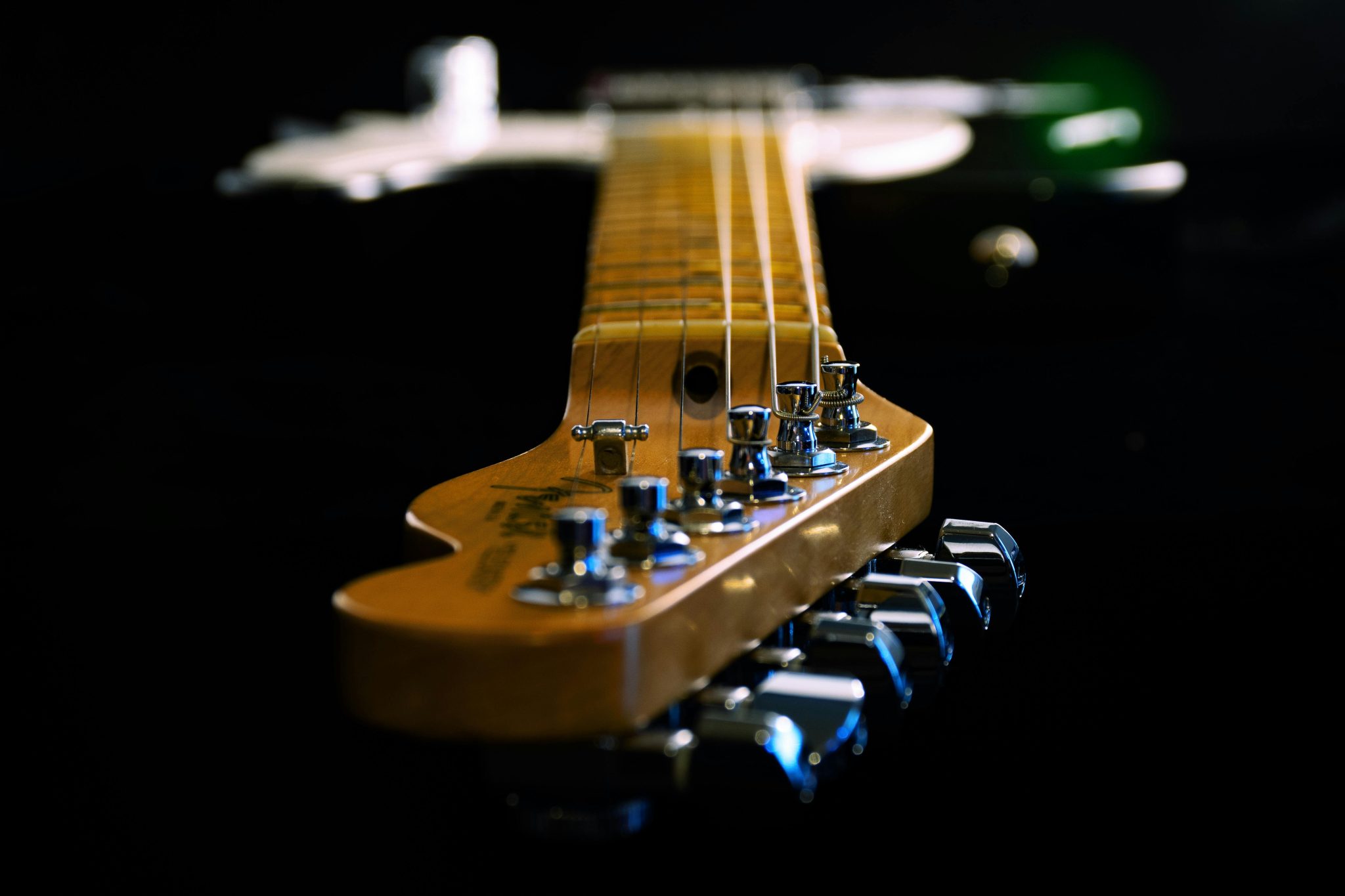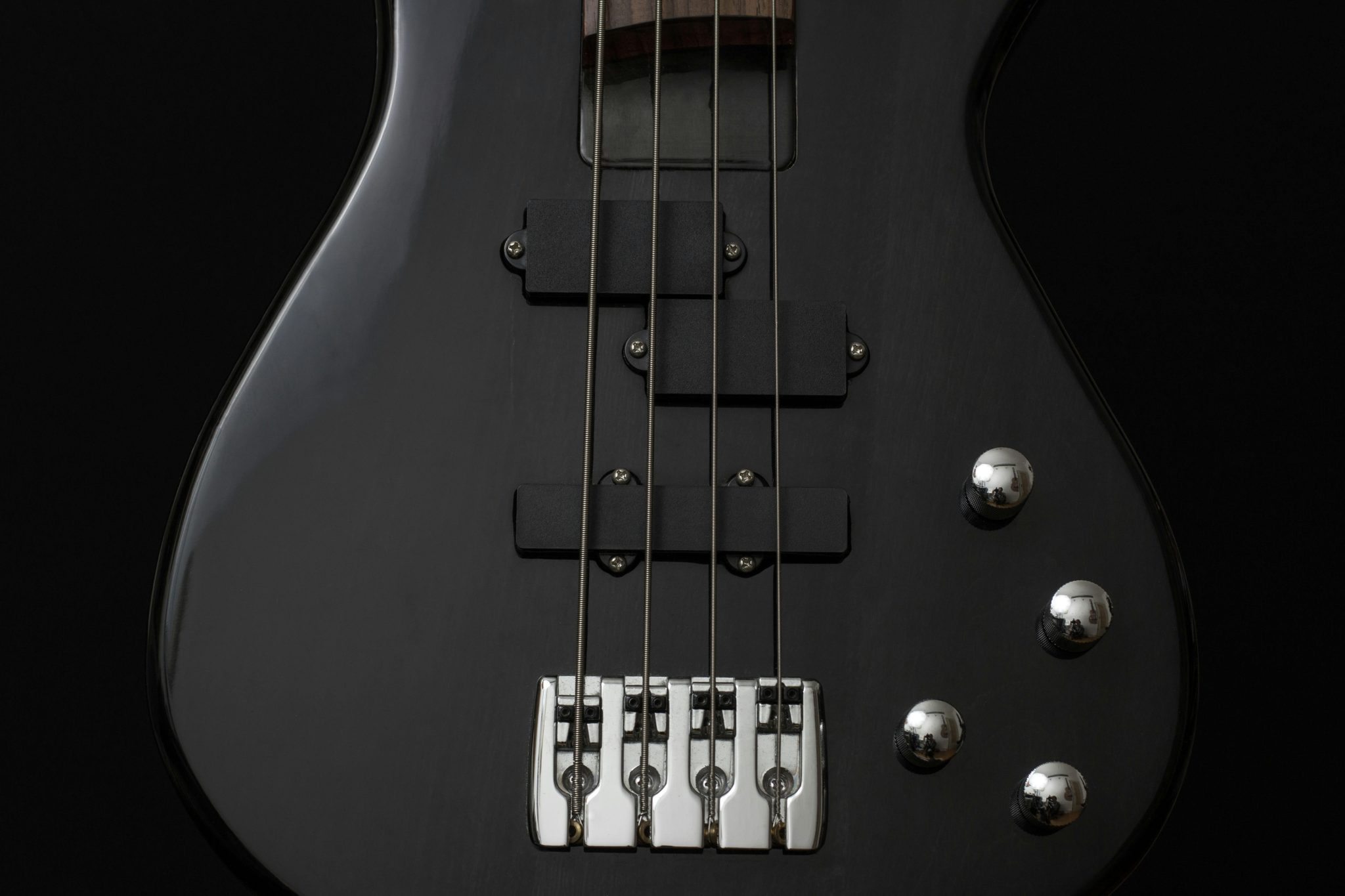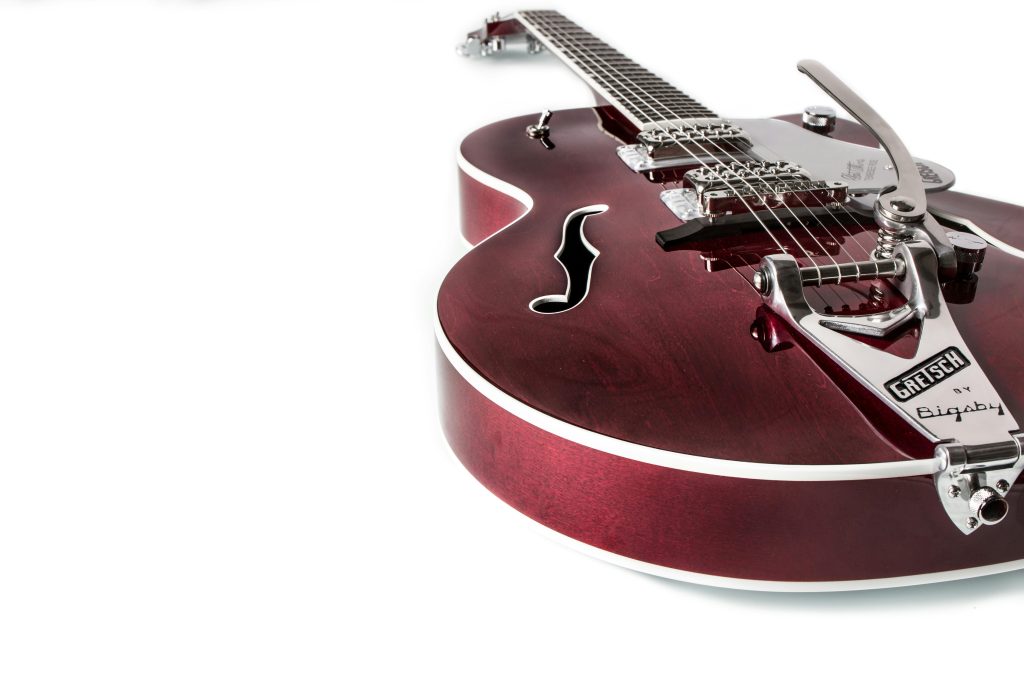Every guitarist has a moment when he or she is certain it has died, and after the last vibration, the air brings the faint echo of something that was once there. In that quiet, there is a question (which constantly presents itself): how does this instrument make strings and wood touch the heart?
The guitar is not just a musical instrument. It is a complicated symphony of components, all functioning in ideal harmony to produce sound, emotion, and meaning. You can be an inquisitive beginner or an experienced musician, but knowing your guitar parts is a step toward understanding its spirit.
The Headstock: The Guitar Crown.
The headstock is the very first part of any guitar, a glamorous crown that holds it all together. In addition to its aesthetic function, the headstock also plays a crucial role, providing support for the strings and keeping the guitar on pitch.
Tuning machines or tuning pegs are attached to it. These are little guitar parts, the unsung heroes of any guitarist’s performance. They use the twist of a wrist to increase or decrease the tension of the string and therefore change the pitch. Your music would be no more than chaos without them.
Various guitars have various crowns. Other types of guitars, such as Fender-style ones, have straight headstocks, and the strings pass directly across the nut in a straight line. Gibson-style guitars, however, prefer angled headstocks, which form a higher string break, increasing tension and sustain.
This minor design change not only affects tuning stability but also the tone character. The most neglected aspect is the headstock, which sets the stage for everything that follows.
The Nut: The Silent Guardian

Immediately beneath the headstock is this little, meagre bit–the nut. The nut can be made of materials such as bone, plastic, graphite, or brass, and it does not seem like anything special; however, its purpose is immense.
It directs every string of the tuners to the fretboard, maintaining the correct spacing and height. The grooves in the nut are chiselled to hold each string so that each is vibrated and intonated correctly.
An improperly cut nut may cause havoc, resulting in buzz, tuning instability, or an uneven sound. And a properly designed one, but almost imperceptible to the audience, makes all notes sound through the air. Its guardian of the guitar, the nuh, is silent, always faithful.
Way of Expression
Then slipping your hand downwards, you come to the neck–the long, narrow highway, by which fingers move and melodies are born. The neck is linked to the soul of the guitar.
It contains the fretboard, a surface normally composed of rosewood, maple or ebony. It influences the instrument’s feel and resonance, which depend on the type of wood used. Maple is sharp and crackling bright. Wood Rosewood brings out cosiness. Ebony, sheeny, thick, is crisp and clear.
The fretboard is marked with metal strips, laid across the board between musical notes, or frets. Each time a finger is pressed on a fret, the length of vibration of the string becomes shorter and the pitch is altered.
Playability is also affected by the neck’s shape. The C-shaped neck is very comfortable and rounded, which is suitable for rhythm players. One could have a V- or U-shaped grip that would provide more grip. A truss rod, hidden inside the neck, helps maintain its shape as the strings tend to pull it at all times.
The difference between one millimetre is significant. And physics is met in the neck–where mathematics is music.
The Heart and Resonance Chamber
When we get to the body, we get to the heart of the guitar. It is here that the vibration is converted to voice.
An acoustic guitar uses the body as an amplifier. The soundboard, usually made of spruce or cedar, is sympathetically vibrated by the strings and transmits their sound through the soundhole. The form, i.e. dreadnought, concert, or jumbo, influences the tonal balance between bass, mids, and treble.
This is not the case with electric guitars. Their solid bodies do not use resonance chambers but rather pass the vibration of the strings by using magnetic pickups. A Les Paul body is made of mahogany, and its thickness makes it warm and sustaining, whereas a Stratocaster body is contoured and made of alder, which gives more brightness and punch.
The tone and comfort are all affected by the finish, paint and even weight. To put it in a word, the body not only defines the sound, but also the feeling of the guitar in your arms, the movement of your arms when you play it, and the way it becomes a part of your own rhythm.
The Anchor of Vocation
The bottom of the body is the bridge, which is the point of attachment for the strings and the starting point for sound transmission.
In an acoustic guitar, the saddle connects the strings’ vibrations to the soundboard at the bridge, which is then free to vibrate. The material of the saddle influences clarity and projection: bone, Tusq, or synthetic compounds.
The bridge also defines the sustain and the tuning stability in an electric guitar. Fixed bridges such as Tune-O-Matic are firm and dependable. Some tremolo systems, such as Stratocaster models, feature vibrato and expressive pitch bends, which typically need careful setup to avoid tuning issues.
The bridge itself may not be glamorous, but it is the intersection of energy, physics and art. Here, every note you make has a beginning and an end.
The Pickups: The Electric Guitar Voice.
When the heart is part of the body, then the voice is picked up. These miniature magnets are covered with a coil of wire, which converts the vibration of the strings into electrical impulses, which can be magnified and shaped.
Blues and surf rock are dominated by single-coil pickups, which produce high, clear sounds. Humbuckers, which are meant to eliminate electrical hum, provide warmer tones that are ideal in rock and metal.
Other guitars have active pickups that use batteries, which give modern players a clean, high-output signal. The position of pickups is also important: the closer they are to the neck, the deeper and mellow their sound, whereas the closer they are to the bridge, the more bite and clarity they suggest.
Each rotation of the tone knob, each stroke of a switch is an experience in soundscapes–and it is through these little wonders of electromagnetism that this is possible.
The Strings: The Soul of Sound

Tone and feel are affected by their material, thickness and tension. The steel strings are brassy and bright, and lively. Nickel adds warmth. Classical guitars are played with nylon strings, which produce soft, expressive sounds.
Switching the string gauge may be a total game-changer. The lighter strings are easier to bend, but they might lose some depth, whereas the heavier strings will take strength but will reward you with power and sustain.
The strings grow old, tarnish, and wear out, but they are the closest bond between the musician and the instrument. Any new set is a new birth — a new surge of power and inspiration.
Conclusion
Just take a closer look at a guitar, and you will find that it is not just wood, wire, and glue. It is a machine designed to be emotional — a decoder of human emotion and musical vibration.
Even the smallest of frets or the biggest of tonewood panels have a reason to be there. The parts are in harmony to achieve music.
When one breaks down the guitar into its parts, one not only knows how the guitar works, but also why it works. It is the message that beauty can be in cooperation–in how every tiny thing, however insignificant, plays a part in the entirety.
The next time you take your guitar, pause before playing. The sensation of the grain in your fingers, the tension of the strings, the body weight. It is not merely a tool in your hand, but a masterpiece, a masterpiece of artistry, of history and of music.





















